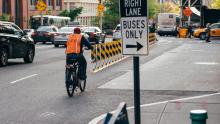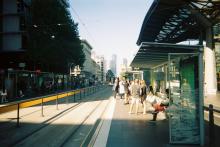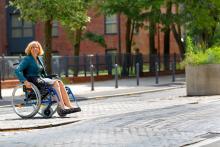Sidewalk Wars: City Cyclists vs. Pedestrians
For the urban landscape, sidewalks have become a type of no man’s land for city commuters — not only for pedestrians but also for cyclists. Since vehicles rule the road, pedestrians and cyclists are at-risk anytime they walk or ride in the road. To remain safe, city cyclists and pedestrians often turn to the sidewalk.
While many cities want their residents and commuters to move away from using cars and encourage bicycling, pedestrians in some cases see this shift as dangerous.
- Read more about Sidewalk Wars: City Cyclists vs. Pedestrians
- Log in to post comments
 Skip to main content
Skip to main content









